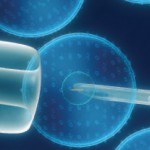Since base editing does not cause a break in the DNA, it might produce more predictable results than CRISPR, which can cause “slightly unpredictable” insertions or deletions in the genetic code, Professor Robin Lovell-Badge of the Francis Crick Institute in London said in an email.
In the second study published in Science, Zhang, an early developer of CRISPR-Cas9 technology, created a new version of CRISPR that can edit RNA, which could help scientists make precise changes in cells at different points in development.
David Cox, a graduate student in Zhang’s lab and a lead author on the study, said the RNA editing system, called REPAIR, can “fix mutations without tampering with the genome.” However, the changes are not permanent because RNA degrades over time.
Carroll said both editing systems offer the chance to correct specific disease mutations, either in DNA or messenger RNA. But neither is ready for human trials yet.
“There are a number of hurdles that need to be overcome, including proving efficiency, specificity and safety,” he said. The scientists also need to develop ways to deliver the editing systems into the correct cells in the body.
References
- Gaudelli N, Komor A, Rees H, et al. Programmable base editing of A•T to G•C in genomic DNA without DNA cleavage. Nature. 2017 Oct 25. [Epub ahead of print]
- Cox D, Gootenberg, J, Abudayyeh O, et al. RNA editing with CRISPR-Cas13. Science. 2017 Oct 25. [Epub ahead of print]



